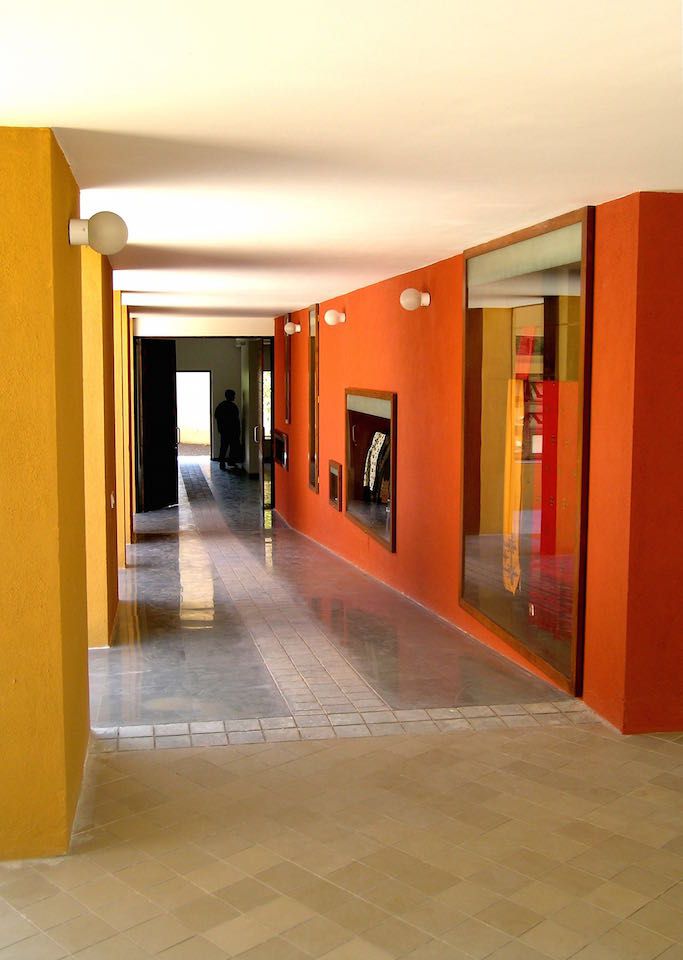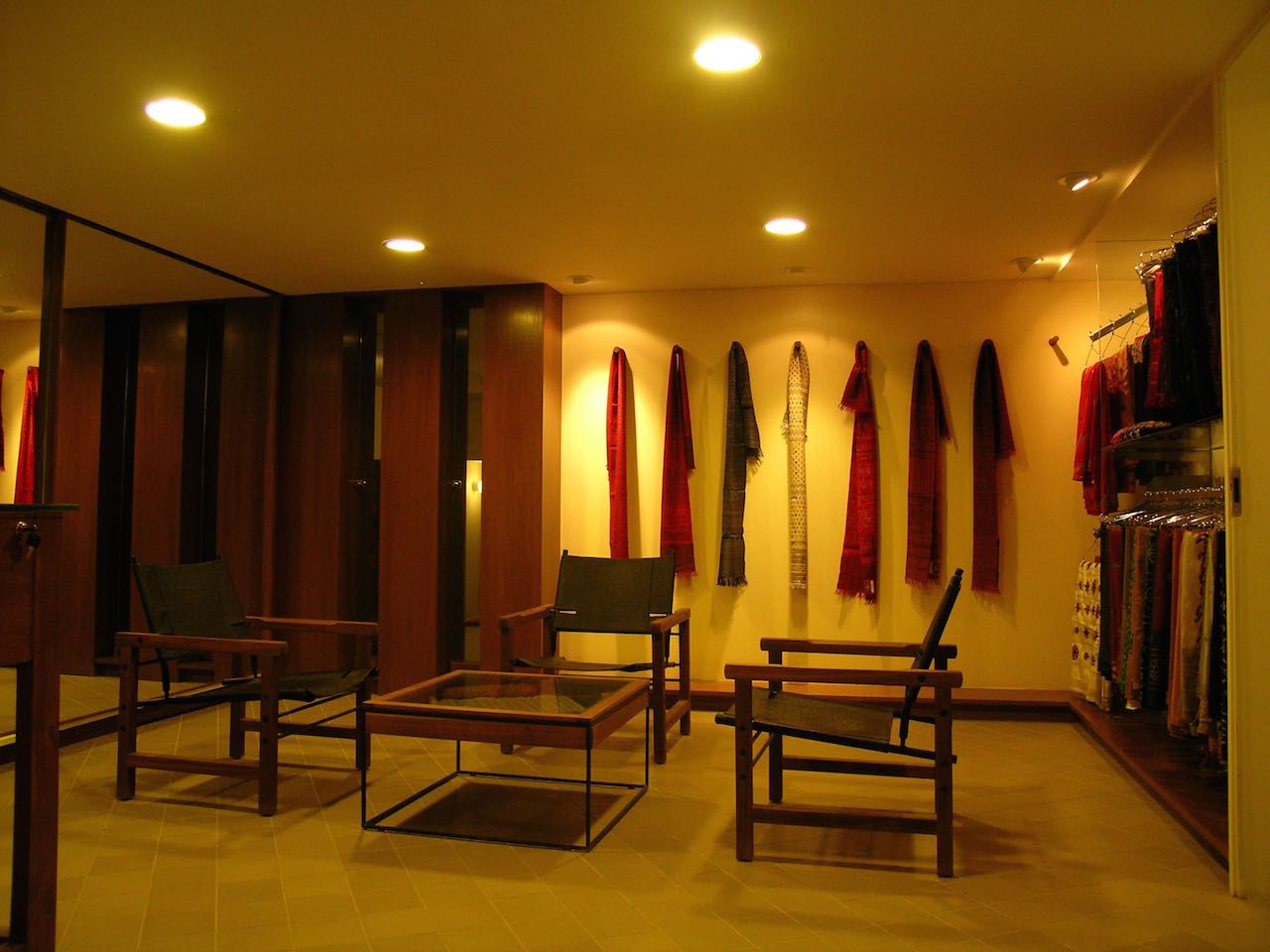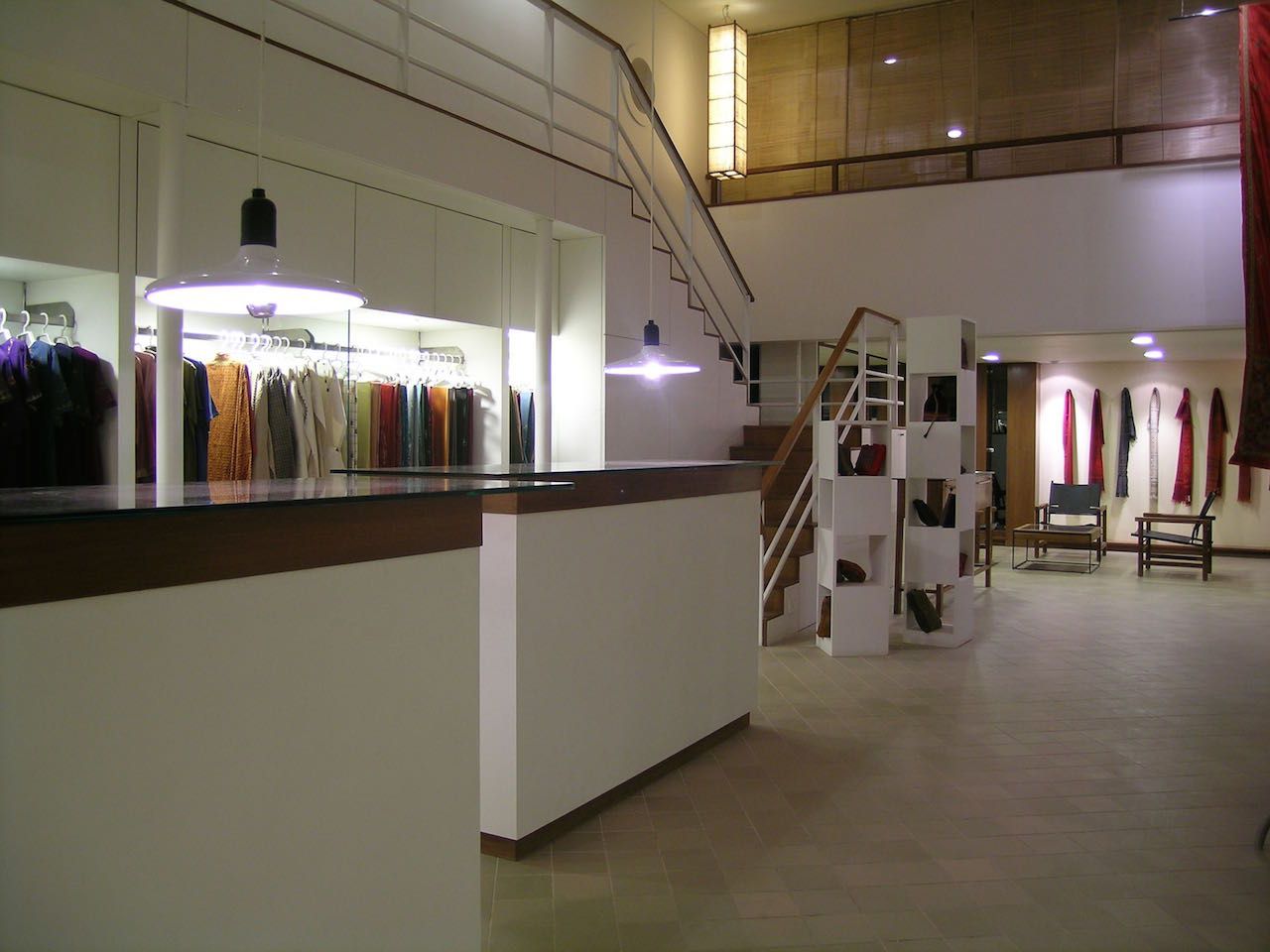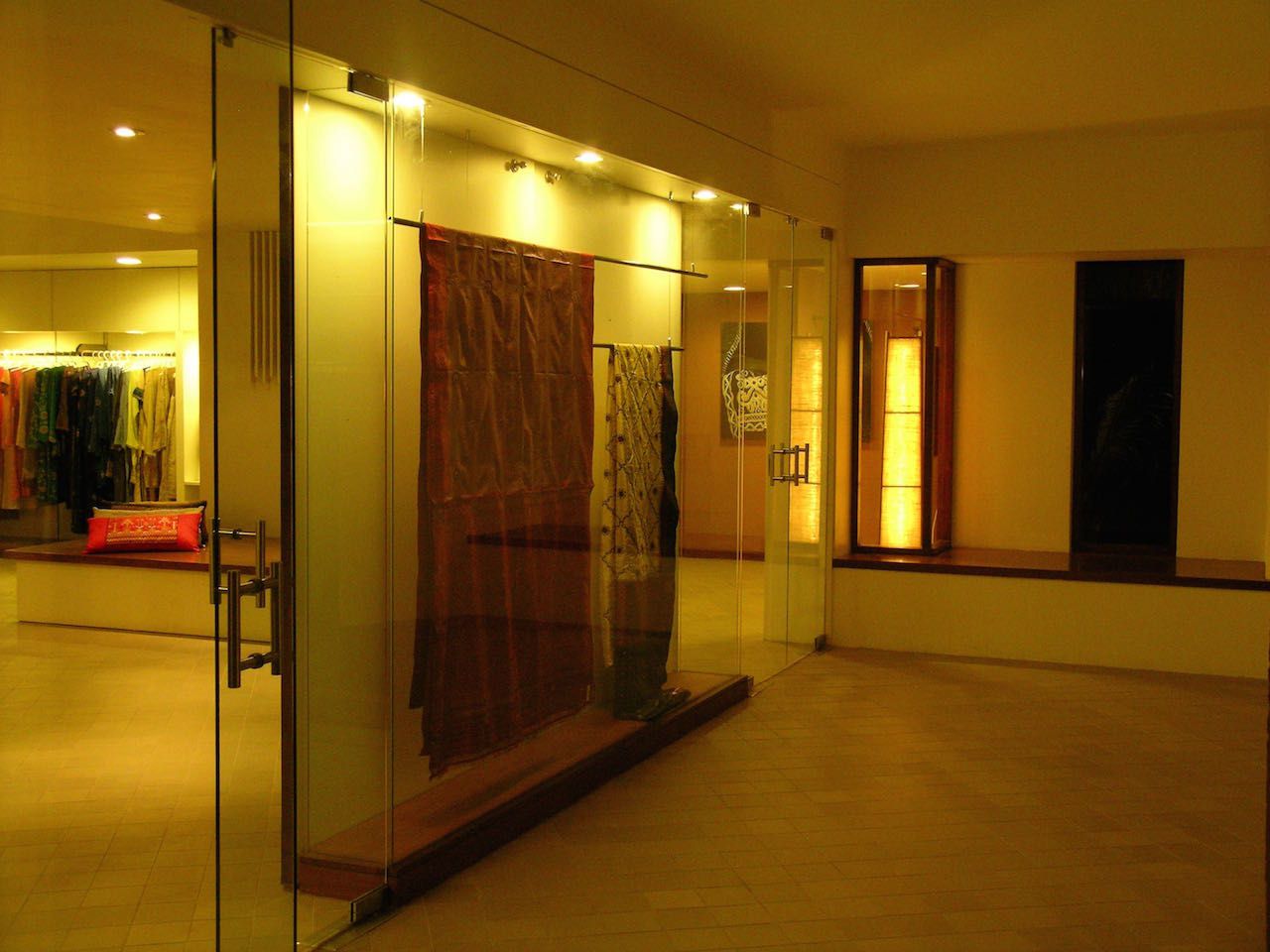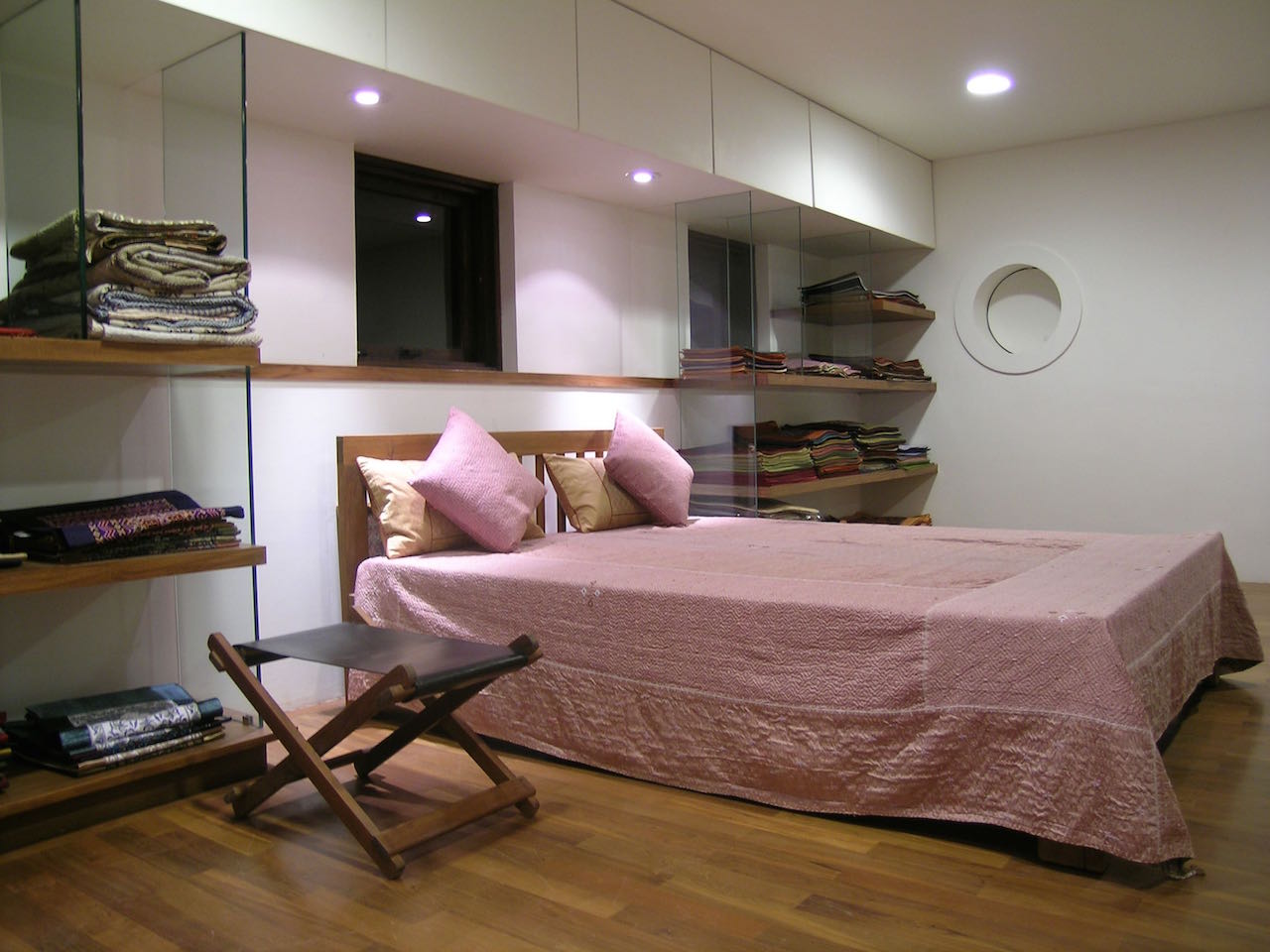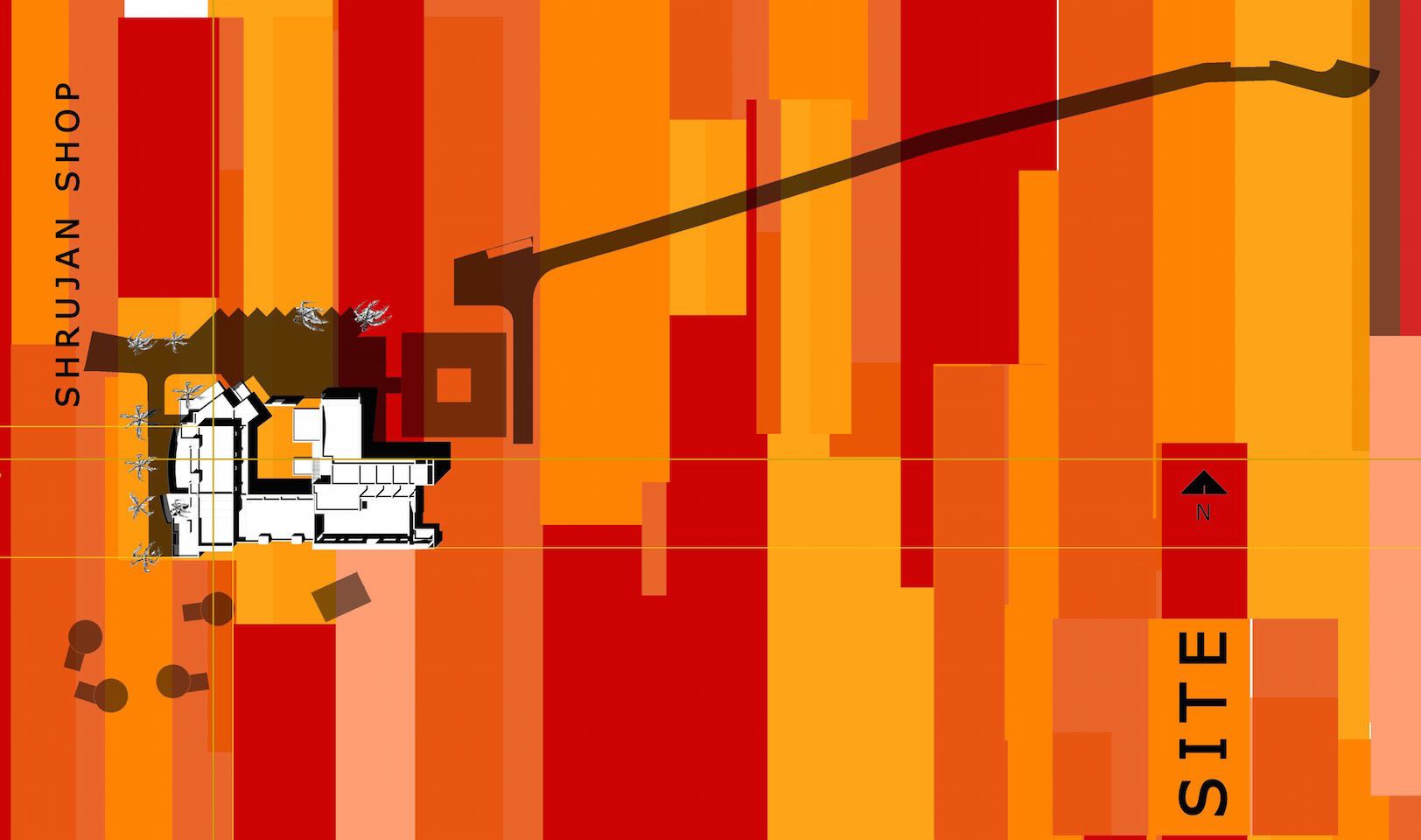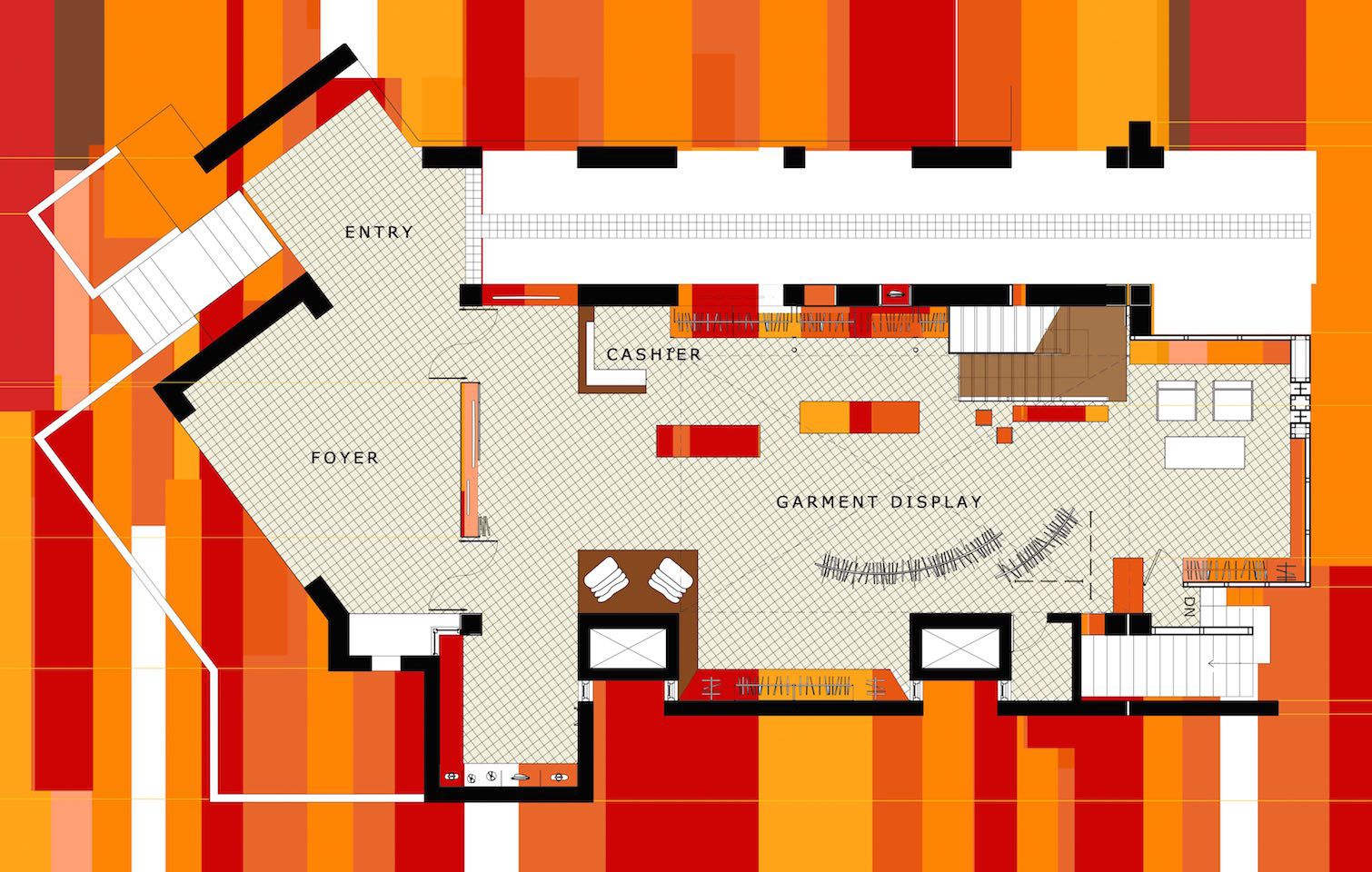Shrujan has developed a unique, sustainable means of income generation for village women using their own local form of artistic expression: hand embroidery. Since its inception in 1969, it has been involved with the local womenfolk of the region to revive and carry forward this age-old traditional craft and have introduced new design opportunities and business training to the women involved.
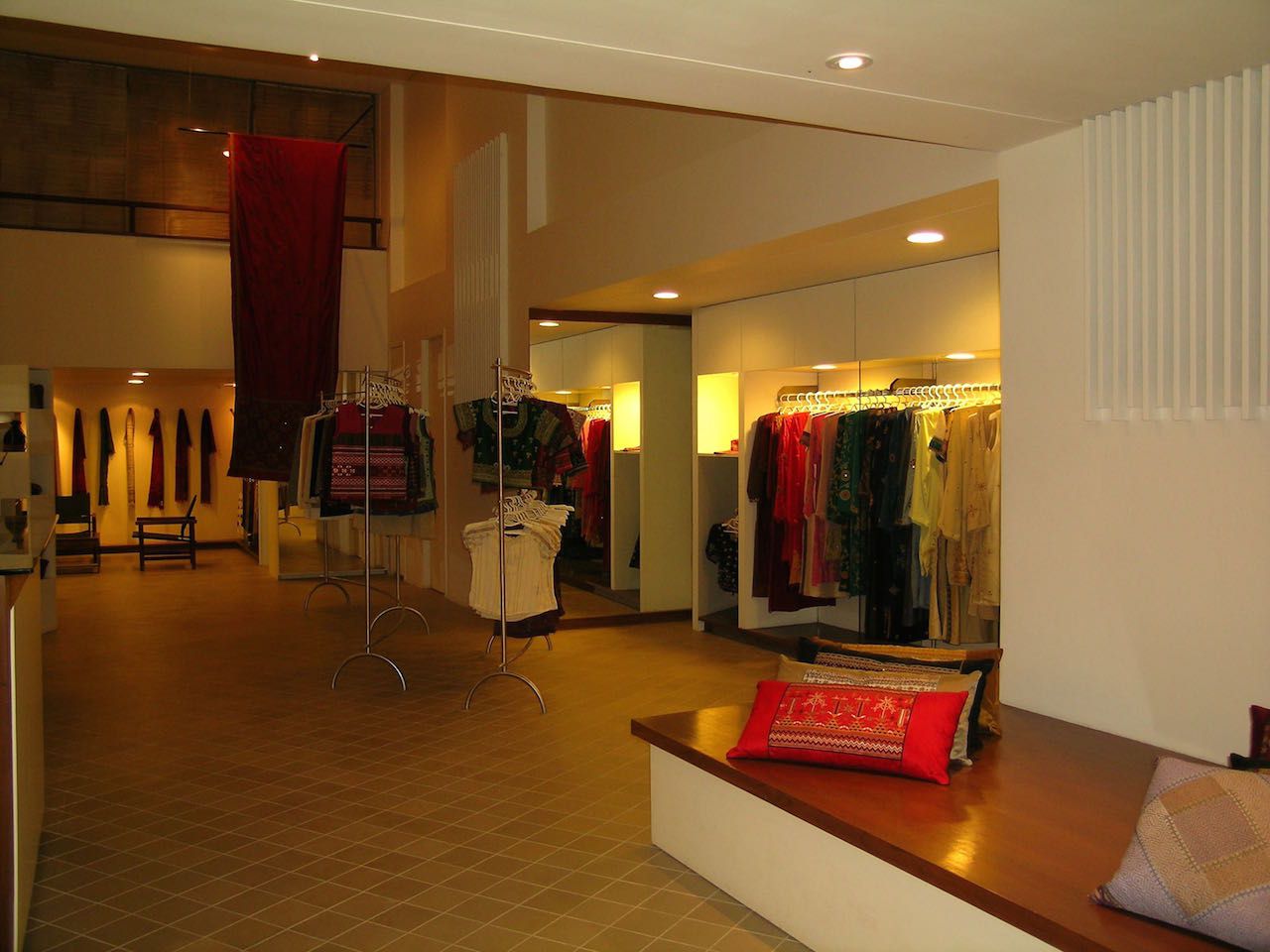
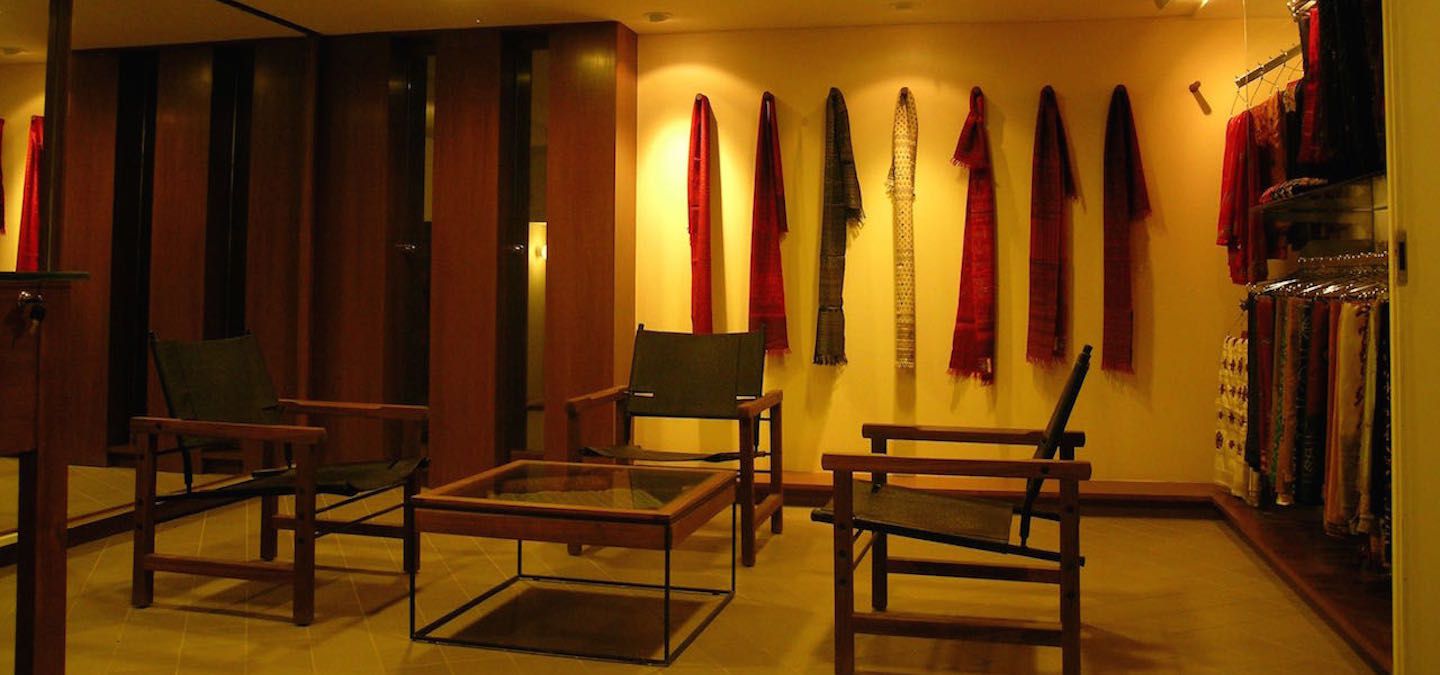
shrujan shop
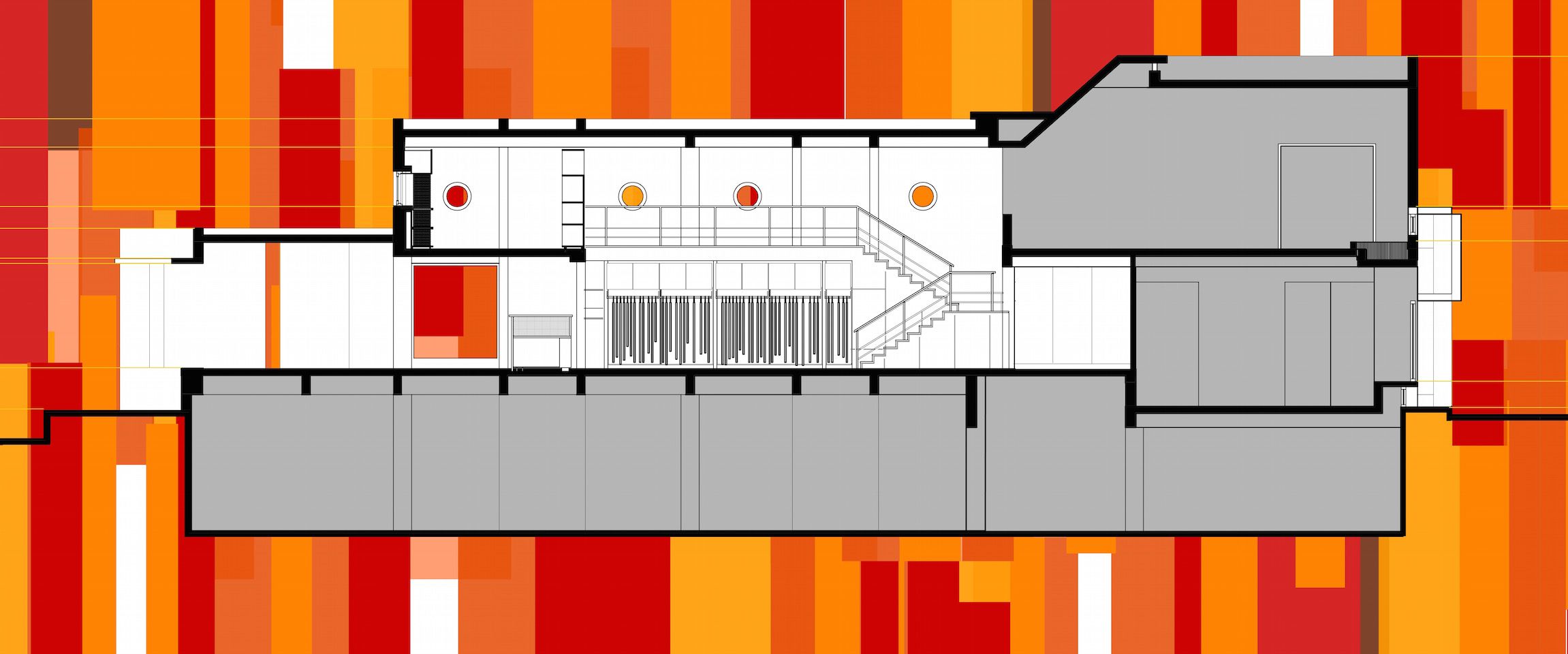
The Shrujan Shop based at Bhujodi, close to the town of Bhuj in the Kutch region of Gujarat is run by a non-government and non profit based charitable trust.
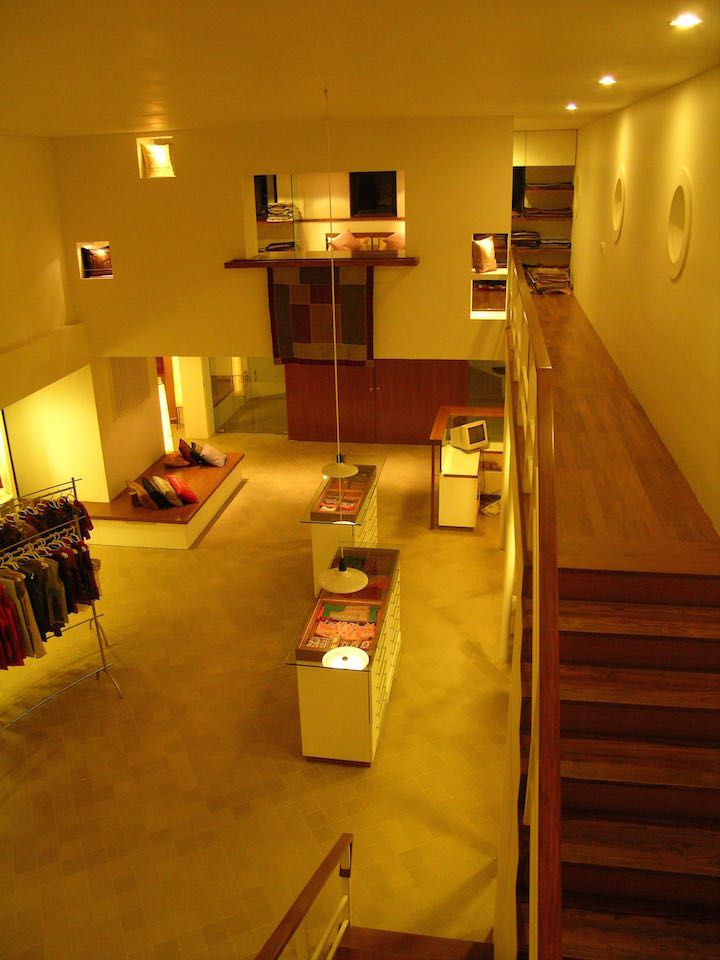
client:
shrujan shoplocation:
shrujan campus - bhujodi, dist kutch, gujaratdesign team:
uday andhare, mausami andhare, pragnesh patelcompletion year:
2004PEOPLE AND CULTURE
Kutch lies in the northern western part of Gujarat State. The character and lifestyle of Kutchi people is formed partly by the unique and isolating geography of the area. To the north and east, Kutch is surrounded by great salt marsh desert areas: The Great Rann and The Little Rann. To the south and west lies the Arabian Sea. The land is hot and arid and also experiences droughts recurrently. People here cannot depend upon agriculture and cattle rearing exclusively for their livelihood. In contrast to the dry and barren landscape of the region, people have developed traditional methods of building that reflect a vibrant character. The same is reflected in their customs, rituals and dressing styles.
THE SPLENDID CRAFT TRADITION
Embroidery is one of Gujarat’s most celebrated and splendid craft traditions. The traditional craft of hand embroidery occupies a special place in the cultural heritage of Kutch. The various villages and the prevalent caste system of Kutch have nurtured within their communities, diverse types of embroidery. Their designs are as different as the customs and colours of these various castes. The secrets of these designs are affectionately guarded. They are handed down as family heirlooms from mothers to their daughters from generations immemorial. The women prepare excellent embroidered textiles that form a part of their dowry, thus making the art an integral part of their culture and tradition. These textiles reflect the abundance and richness of their crafted skills. For the women, embroidery is more than a practical, decorative medium for household goods. It is an important means of personal, social and religious expression. Each ethnic group and community has its own particular style, lexicon of stitches and motifs. Ahir, Aari, Rabari, Kambira and Soof to name a few. Shrujan has carefully penetrated this closed culture and befriended the mothers of the various art forms of embroidery. Currently, Shrujan works with 16 different styles of embroidery, done by a variety of communities and tribal groups.
Shrujan acts as an intermediary to communicate and channelize this traditional craft to the broader Indian and International markets. In this way, the craft have found for itself a broader use in the day-to-day lives of a wide and diverse range of people and not just remain artifacts for display in showcases. This ensured a continuous means of income for the women, making them economically independent and earn the respect they deserve as fine artists and artisans.
ROLE OF SHRUJAN
After the devastating earthquake of January 2001, Shrujan focused on re-building the structures, livelihood, morale and health of the local people. Therefore a flagship store was incorporated to create a new face for Shrujan and provide a marketing platform for its wholesale international clientele.
Apparel designers were brought in to create high quality clothes and lifestyle products from these embroidered textiles. By adopting traditional craft with contemporary tastes, Shrujan has ensured that the work is easily marketable.
THEMATIC IDEA:
The “Shrujan Shop” was envisaged as a place to bring to focus the magnificent embroidery traditions through various textile forms. The shop caters to an urban clientele and thus the entire interior of the shop reflects a contemporary modern design idiom, juxtaposed with display of embroidered garments through a spectrum of colours in silk, cotton, and wool. This idea also highlights the value of these artistic traditions for a modern lifestyle, creatively offset against materials like glass, steel and polished wood. The décor attempts to weave together diverse range of displays from hanging textiles, garments, totems for bags, island units for small patches and borders, using homogeneity of white colour and seamless sequence of spaces.
The periphery of the shop is utilized for garment display and storage whereas specialized islands create punctuations in the movement within the shop.
References to the popular Kutchi vernacular decorations and forms are consciously avoided to reinvent a new syntax.
THE LAYOUT
The Shrujan shop is a part of the Shrujan campus, which houses various administrative spaces and workshops. The shop is located just near the entrance to the building that faces the North. A play of small windows juxtaposed on terracotta coloured wall provides special display towards the court. Clear glass used for doors and a full display window next to the foyer mark the entrance to the shop. The door location allows one to view the interior space along its depth. Special care was taken to provide natural light, passive ventilation and thermal insulation within the space from the west and south.
Wind towers are introduced as a passive cooling on the west wall to provide natural air and ventilation, thereby reducing the temperature inside. The east façade flanks the courtyard and has a few recessed circular openings on the upper level. Exhaust fans installed on the same wall suck the rising hot air into the courtyard. A double volume space within the retail store allows the space to display/hang large vertical panels or saris that could be viewed in its entire length. Saris are displayed such that its lower end matches the eye level for one to have a look at the intricate work done on the border.
The Store is divided into two levels, the ground and a mezzanine floor. The ground floor displays all readymade garments, accessories such as hand-bags, pouches, stoles, jackets, embroidered patches, etc. The home furnishing products such as bed covers; pillow/ cushion covers, quilts, etc. are displayed on the mezzanine floor. A staircase leading to a narrow bridge allows an interesting elevated view of all the display below, as one transition to the mezzanine floor.
DESIGN FEATURES
The entire canvas for the interior is kept neutral in order to highlight the products on display that are vibrant intricate pieces of embroidery. Therefore a stark contrast is kept as a feature to focus on the products. The walls and columns are all painted white. The flooring is one throughout using a clay tile that is reminiscent of the traditional mud flooring used in the Kutch region to form a neutral background for the display.
The central idea was to create islands of display units thereby arranging the storage cabinets on the periphery (all painted white), corners, below the stairs or behind the mirror faced cabinets. The islands comprise of display units in the form of cabinets (with drawers) painted white on all sides and transparent glass top, wooden totems to display handbags and other small items and souvenirs, metal stands with hangers to display the readymade garments. Provision is also made to display saris from the top. The entire space is a single large volume offering the visitor a holistic view at a time. One gets an option to move about and look at various display items at ones will. Natural lighting is provided so that the true colors of the items are revealed. Diffused peripheral lighting is used to avoid glare and reflection from surfaces. Pendant lights used over the island cabinets highlight the items seen through the glass top. Recycled, polished wood is used in low level display areas along the walls, the staircase and the entire mezzanine floor.
The design of the shop attempts to rekindle the timeless beauty and warmth of our textile traditions and reinstates their usage in a contemporary context.
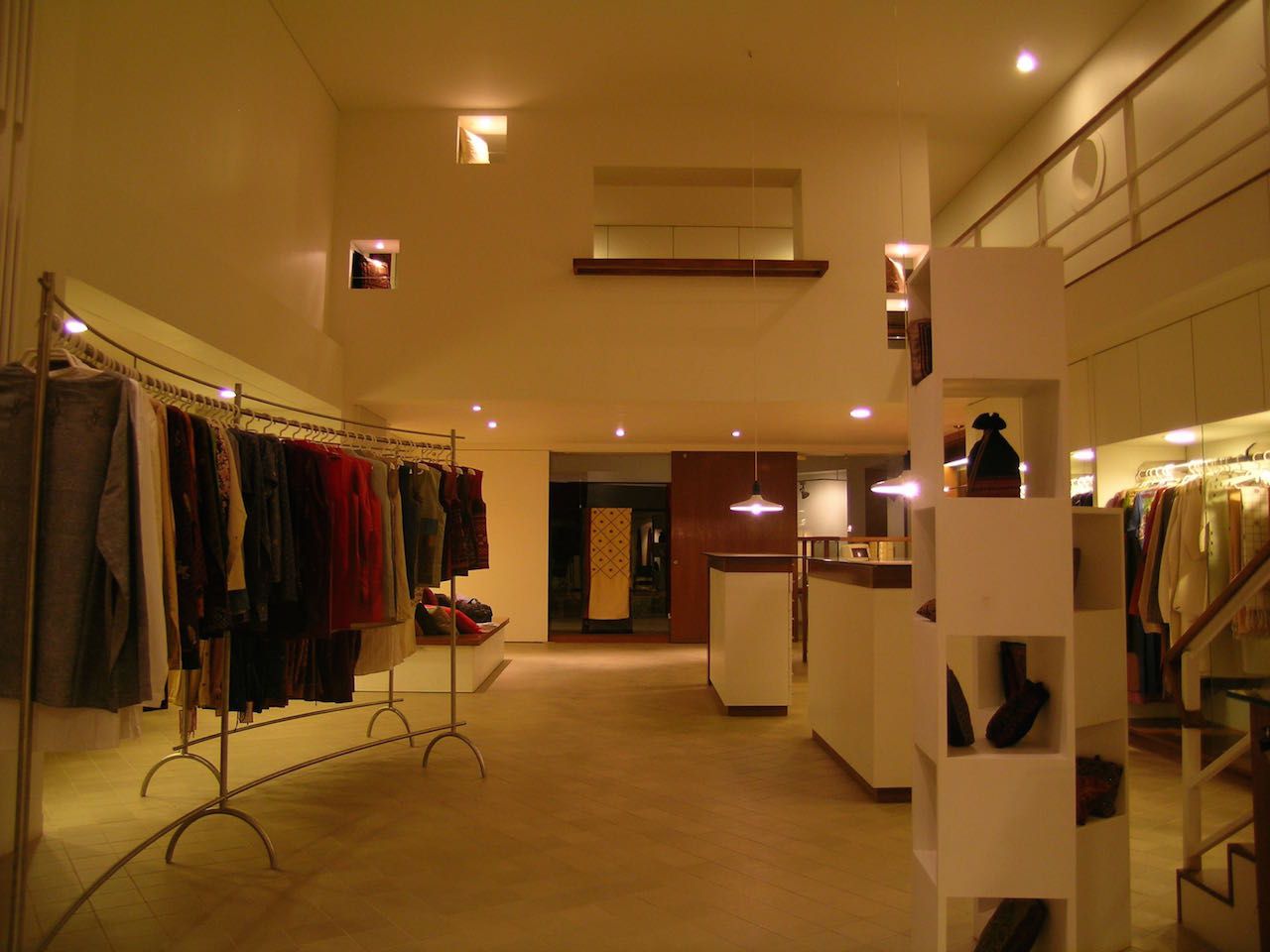
PEOPLE AND CULTURE
Kutch lies in the northern western part of Gujarat State. The character and lifestyle of Kutchi people is formed partly by the unique and isolating geography of the area. To the north and east, Kutch is surrounded by great salt marsh desert areas: The Great Rann and The Little Rann. To the south and west lies the Arabian Sea. The land is hot and arid and also experiences droughts recurrently. People here cannot depend upon agriculture and cattle rearing exclusively for their livelihood. . .
Read More
PEOPLE AND CULTURE
Kutch lies in the northern western part of Gujarat State. The character and lifestyle of Kutchi people is formed partly by the unique and isolating geography of the area. To the north and east, Kutch is surrounded by great salt marsh desert areas: The Great Rann and The Little Rann. To the south and west lies the Arabian Sea. The land is hot and arid and also experiences droughts recurrently. People here cannot depend upon agriculture and cattle rearing exclusively for their livelihood. In contrast to the dry and barren landscape of the region, people have developed traditional methods of building that reflect a vibrant character. The same is reflected in their customs, rituals and dressing styles.
THE SPLENDID CRAFT TRADITION
Embroidery is one of Gujarat’s most celebrated and splendid craft traditions. The traditional craft of hand embroidery occupies a special place in the cultural heritage of Kutch. The various villages and the prevalent caste system of Kutch have nurtured within their communities, diverse types of embroidery. Their designs are as different as the customs and colours of these various castes. The secrets of these designs are affectionately guarded. They are handed down as family heirlooms from mothers to their daughters from generations immemorial. The women prepare excellent embroidered textiles that form a part of their dowry, thus making the art an integral part of their culture and tradition. These textiles reflect the abundance and richness of their crafted skills. For the women, embroidery is more than a practical, decorative medium for household goods. It is an important means of personal, social and religious expression. Each ethnic group and community has its own particular style, lexicon of stitches and motifs. Ahir, Aari, Rabari, Kambira and Soof to name a few. Shrujan has carefully penetrated this closed culture and befriended the mothers of the various art forms of embroidery. Currently, Shrujan works with 16 different styles of embroidery, done by a variety of communities and tribal groups.
Shrujan acts as an intermediary to communicate and channelize this traditional craft to the broader Indian and International markets. In this way, the craft have found for itself a broader use in the day-to-day lives of a wide and diverse range of people and not just remain artifacts for display in showcases. This ensured a continuous means of income for the women, making them economically independent and earn the respect they deserve as fine artists and artisans.
ROLE OF SHRUJAN
After the devastating earthquake of January 2001, Shrujan focused on re-building the structures, livelihood, morale and health of the local people. Therefore a flagship store was incorporated to create a new face for Shrujan and provide a marketing platform for its wholesale international clientele.
Apparel designers were brought in to create high quality clothes and lifestyle products from these embroidered textiles. By adopting traditional craft with contemporary tastes, Shrujan has ensured that the work is easily marketable.
THEMATIC IDEA:
The “Shrujan Shop” was envisaged as a place to bring to focus the magnificent embroidery traditions through various textile forms. The shop caters to an urban clientele and thus the entire interior of the shop reflects a contemporary modern design idiom, juxtaposed with display of embroidered garments through a spectrum of colours in silk, cotton, and wool. This idea also highlights the value of these artistic traditions for a modern lifestyle, creatively offset against materials like glass, steel and polished wood. The décor attempts to weave together diverse range of displays from hanging textiles, garments, totems for bags, island units for small patches and borders, using homogeneity of white colour and seamless sequence of spaces.
The periphery of the shop is utilized for garment display and storage whereas specialized islands create punctuations in the movement within the shop.
References to the popular Kutchi vernacular decorations and forms are consciously avoided to reinvent a new syntax.
THE LAYOUT
The Shrujan shop is a part of the Shrujan campus, which houses various administrative spaces and workshops. The shop is located just near the entrance to the building that faces the North. A play of small windows juxtaposed on terracotta coloured wall provides special display towards the court. Clear glass used for doors and a full display window next to the foyer mark the entrance to the shop. The door location allows one to view the interior space along its depth. Special care was taken to provide natural light, passive ventilation and thermal insulation within the space from the west and south.
Wind towers are introduced as a passive cooling on the west wall to provide natural air and ventilation, thereby reducing the temperature inside. The east façade flanks the courtyard and has a few recessed circular openings on the upper level. Exhaust fans installed on the same wall suck the rising hot air into the courtyard. A double volume space within the retail store allows the space to display/hang large vertical panels or saris that could be viewed in its entire length. Saris are displayed such that its lower end matches the eye level for one to have a look at the intricate work done on the border.
The Store is divided into two levels, the ground and a mezzanine floor. The ground floor displays all readymade garments, accessories such as hand-bags, pouches, stoles, jackets, embroidered patches, etc. The home furnishing products such as bed covers; pillow/ cushion covers, quilts, etc. are displayed on the mezzanine floor. A staircase leading to a narrow bridge allows an interesting elevated view of all the display below, as one transition to the mezzanine floor.
DESIGN FEATURES
The entire canvas for the interior is kept neutral in order to highlight the products on display that are vibrant intricate pieces of embroidery. Therefore a stark contrast is kept as a feature to focus on the products. The walls and columns are all painted white. The flooring is one throughout using a clay tile that is reminiscent of the traditional mud flooring used in the Kutch region to form a neutral background for the display.
The central idea was to create islands of display units thereby arranging the storage cabinets on the periphery (all painted white), corners, below the stairs or behind the mirror faced cabinets. The islands comprise of display units in the form of cabinets (with drawers) painted white on all sides and transparent glass top, wooden totems to display handbags and other small items and souvenirs, metal stands with hangers to display the readymade garments. Provision is also made to display saris from the top. The entire space is a single large volume offering the visitor a holistic view at a time. One gets an option to move about and look at various display items at ones will. Natural lighting is provided so that the true colors of the items are revealed. Diffused peripheral lighting is used to avoid glare and reflection from surfaces. Pendant lights used over the island cabinets highlight the items seen through the glass top. Recycled, polished wood is used in low level display areas along the walls, the staircase and the entire mezzanine floor.
The design of the shop attempts to rekindle the timeless beauty and warmth of our textile traditions and reinstates their usage in a contemporary context.
Read Less